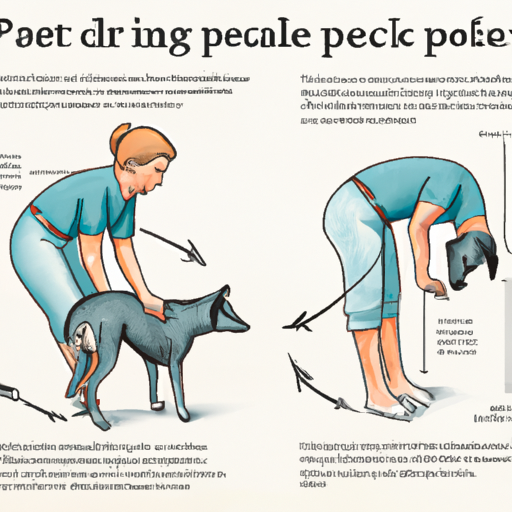Understanding Your Dog’s Anal Glands
As a caregiver to your beloved canine, understanding the anatomy of your pet is crucial. Your dog’s anal glands, or anal sacs, are small, oil-producing glands located on either side of their rectum. These glands play a significant role in canine communication, as they produce a unique scent that dogs use to identify each other. However, they can sometimes become impacted or infected, which can lead to discomfort for your pet.
Signs Your Dog’s Anal Glands Need to be Expressed
Your dog can’t tell you in words when something’s wrong, but their behavior can provide key clues. If your dog’s anal glands are bothering them, you may notice the following signs:
- Scooting: Your dog drags their rear end along the floor.
- Licking or biting at the rear: Excessive attention to the anal area.
- Chasing the tail: Your dog seems to be ‘chasing’ their rear end.
- Swelling or discomfort: Near the anal area, noticeable especially when your dog is at rest.
These signs indicate that your dog’s anal glands may be full and in need of expressing.
Why Do Anal Glands Become Impacted?
Most dogs naturally express their anal glands when they defecate. However, some dogs have difficulty with this natural process due to:
- Soft stools: Dogs with a history of soft stools or diarrhea may struggle to naturally express their anal glands.
- Obesity: Excess weight can put pressure on the anal glands, making it harder for them to be naturally expressed.
- Age or health conditions: Older dogs and those with certain health conditions may have weaker muscles, which can prevent the glands from emptying properly.
| Reasons | Description |
|---|---|
| Soft stools | Stools that are not firm enough to press against the glands during defecation. |
| Obesity | Excess weight can lead to pressure on the glands. |
| Age/Health conditions | Older dogs and those with certain health conditions may struggle to express their glands naturally. |
How to Express Your Dog’s Anal Glands
If you notice the signs of discomfort, it is recommended to get your dog’s anal glands checked by a professional. While it’s possible to express your dog’s anal glands at home, it can be a messy and unpleasant task. If not done correctly, it could also cause harm to your pet. Therefore, it is advisable to let a trained veterinarian or groomer handle this task.
Frequently Asked Questions
Q: How often should a dog’s anal glands be expressed?
A: Most dogs naturally express their anal glands when they defecate. However, if your dog has a history of anal gland issues, your vet might recommend a regular schedule.
Q: Can I express my dog’s anal glands at home?
A: While it’s possible, it’s generally recommended to let a professional handle it.
Q: What happens if anal gland issues are left untreated?
A: If left untreated, impacted anal glands can become infected and abscessed. If you notice any signs of discomfort, consult with a vet immediately.
Q: Can diet affect a dog’s anal glands?
A: Yes, a diet high in fiber can help produce firmer stools, which can help express the anal glands naturally.
Remember, as a caregiver to your pet, your awareness and timely action can save them from much discomfort. Keep an eye out for signs and consult a professional when in doubt.



